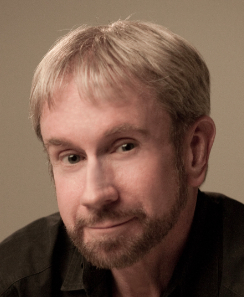What Is Rolfing®?
Rolfing® is an original and scientifically validated system of body restructuring and movement education. It releases the body’s segments – legs, torso, arms, etc. – from life-long patterns of tension and bracing, thereby permitting gravity to realign them. By doing so, it balances the body.
People of all ages come to Rolfing® for help with neck pain, back problems, impaired mobility, and other difficulties that originate with internal strains.
Others seek to improve their appearance, to improve athletic performance, and to enhance personal growth toward a fuller realization of their potential.
Rolfing® results in a feeling of fitness and wholeness. People who have been Rolfed stand and move with more surety and grace than before.
Does Rolfing® Last?
Yes. Photographs show that the changes of the Basic Rolfing® Series are still present many years after the series is complete. However, the client may – after waiting three to six months – wish follow up a Basic Series with advanced work to further realign the body and free its movements.
How Does Rolfing® Align the Body?
To align the body segments, Rolfing® systematically organizes the body’s soft, connective tissue network. This connective tissue network, known as the myofascial system, is “the organ of structure” in the body. It supports the skeleton and the soft tissues, positions the bones, determines the direction of muscle pulls and of movement, and gives the body its shape.
The human body holds itself erect with pairs of muscle groups functioning within a network of fascial sheaths. These pairs normally function in an antagonist relationship with one another. When one of the pair contracts the other must extend to maintain proper balance.
If that relationship is impaired through injury or chronic tension in one of the groups, the fascia conforms to the shortening and the rest of the body must compensate to maintain balance.
The job of Rolfing® is to free the shortened fascia, allow the muscles to return to a balanced relationship and the body to release the compensations. When the myofascial system is organized, gravity causes it to uplift and align the body’s segments.
How Does Rolfing® Feel?
Sensations in the area being worked may range from pleasurable warmth to momentary discomfort. At times there may be little sensation at all. How you will feel during Rolfing depends on several factors such as injuries to the area or tension caused by chronic stress.
After Rolfing®, people report feeling lighter and better-balanced. Movement feels easier, as if the joints have been lubricated. Feelings of well-being reflect the body’s higher energy level.
Chronic discomforts often disappear immediately or soon after the series is completed.
Are There Psychological Results from Rolfing®?
While Rolfing® is primarily concerned with structural changes, any change in the physical body affects the whole person. A human being is comprised of many aspects – attitudes, emotions, behavior and structure. Each is related to all the others.
Rolfing® clients often report positive changes in their outlook on life and in their ability to handle emotional changes.
About Ida Rolf, Ph.D.
Biochemist Ida P. Rolf, Ph.D., found after 40 years of study that the body’s internal network of connective tissue, its “organs of support,” can plastically adapt to patterns of use or misuse. As much as 80% of the body’s protein is used to form connective tissue (myofascia) which can aid normal, balanced posture or it can short, work-harden, thicken or set up like glue to compensation for motion habits or chronic structural problems.
Dr., Rolf discovered that the steady application of direct manual pressure causes collagen slowly to melt and stretch. When pressure is systematically applied throughout the body’s connective tissue network, results can include new flexibility, the release of old postural patterns, and improved alignment with gravity.
Many people report improved symmetry, deeper and easier breathing, increased energy and lower tension levels. Benefits can also include new feelings of lightness or “lift,” deeper and more restful sleep and emotion relief consistent with the goals of psychological therapy. For some the experience is purely physical, for others it can be a deeply spiritual awakening.
“Do You Take Insurance?”
“I no longer bill insurance companies. However, I provide my clients with receipts for the payments they have made, which are due at the time of treatment. These receipts contain treatment descriptions and billing codes recognized by major insurance companies.
“It would then be your responsibility to obtain reimbursement. Whether you receive reimbursement would depend on the individual policies of each company. When asking your insurance company about this, it is important to mention the proper billing codes, since relatively few companies recognize Rolfing® as a modality separate from deep-tissue “massage.”
“However, you should certainly mention Rolfing® AND “Structural Integration” just in case your company is an exception. Just be prepared for our work to be treated as “massage” instead.
“Also, please remember that some companies will reimburse for one hour of a 90 minute session, which is certainly better than nothing!”
About the Rolf Institute
The Rolf Institute was founded in 1971 to carry on Dr. Rolf’s work. Its major purposes are to train Rolfers and Rolfing Movement teachers, to carry on research and to provide information to the public.
Only individuals trained and certified by the Rolf Institute may use the Rolfing service mark.
Information about Rolfing and Rolfing Movement Integration is available from the Rolf Institute and includes:
* Original literature written by Dr. Ida Rolf
* The result of continuous scientific studies
* Video tapes on Rolfing
* A directory of Rolfers and Rolfing Movement Teachers
* Information about training as a Rolfer or Rolfing
* Movement Teacher
The Rolf Institute
205 Canyon Blvd.
Boulder, CO 80302
(800) 530-8875 for general information
(800) 803-1952 for admissions
(303) 449-5903
info@rolf.org
www.rolf.org
